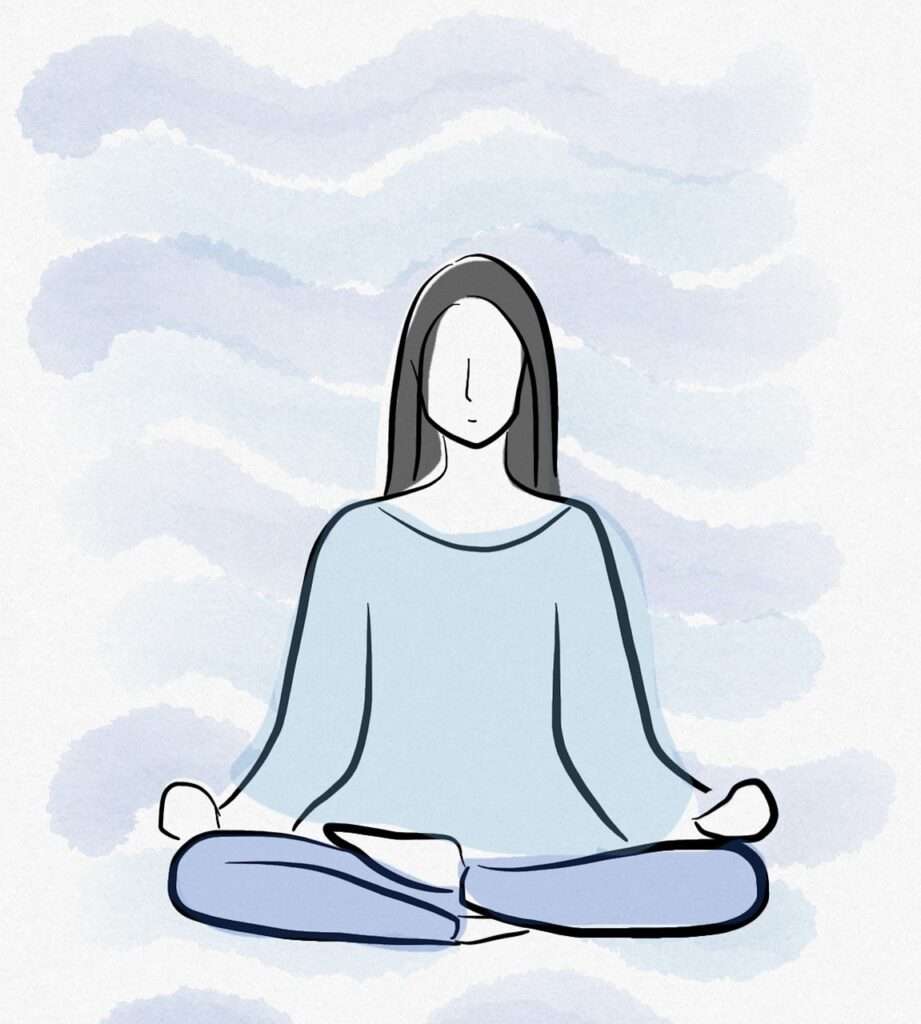By S.Rupsha Mitra: South Asia Correspondent

Healthy living is an art which can be achieved with practice of myriad spiritual methods like Yoga and Vipassana. Healthy living is the complete wellbeing of the body including positive physical and mental health states.
Health is a state of complete physical, mental, and social well-being and not merely the absence of disease or infirmity as described by World Health Organization.
Health is defined by many factors like the ability to handle anxiety and stress. It is living an active and hearty life.
Yoga :-
Yoga is a quintessential aspect of healthy living. Patanjali’s Yoga is a system of self-culture and union of the individual with the Supreme Self; the work is assigned to 200 B.C. The system consisted of the 8-fold path or Asthangayoga. It is a spiritual practice consisting of different body postures like asanas and meditation. It is central to Indian philosophy and was first mentioned in the Rig Veda. Yoga means unity between the mind and the body. The term being a union of the two, that is the individual and the universal which have been separated because of avidya, or “clouds of ignorance”.
and relax.
Yoga is a personal journey
Where-ever you decide to partake, arrive with your body, a clear mind and focus on all the sensations and focus on the feelings in each part of your body. It is about breathing and being aware of your true, authentic self, whilst aligning with the mind.
Yoga, a systematic practice and implementation of mind and body in the living process of human beings to keep harmony within self, within society
Yoga can also be termed as a psychological technique to control abnormalities by chitta vitti nirodha, the restriction and control of modifications of the mind. Yoga controls all mental processes, the conscious and unconscious. Vyasa describes that the chitta may be restless (kshipta) or infatuated (mudah) or distracted (vikshipta) or one-pointed (ekagra), or restricted (niruddha). Violent passion may lead to concentration, as in the case of one fighting a mortal enemy.
Similarly in daily life, we concentrate for some time on one subject and turn to another before long.
But the aim of yoga is to achieve an acute focus which is continuous. The objective of Yoga is to achieve a level of concentration which remains unbroken.
Patanjali, in ancient Indian texts describes the ways of achieving this in his Yoga Sutra. Yoga Sutra contains steps of Yoga which are :-
- Yama – abstentations
- Niyama – observations
- Asana – posture
- Pranayama – Control and regulation of breath
- Pratyahara – Restraint of the senses, through “prati” (withdrawal) and “hara”, (food).
- Dharana – Fixing the mind on a particular object
- Dhyana – Meditation, sustained attention on one thought
- Samadhi – Where the sense of identity is lost and there is no distinction between the north and the known, aimed directly at controlling all the mental processes.
In a more modern context, yoga has been defined as ‘‘a systematic practice and implementation of mind and body in the living process of human beings to keep harmony within self, within society‘’
Yoga can be practiced by individuals suffering from illness and can be crucial in the process of healing, whilst making yoga a part of the daily routine can enhance healthy living.
The benefits of Yoga are many :-
- Sitting in one posture as in Yoga is a very important precondition for mental health. A restless mind leads to restlessness in posture and bodily dynamics. Yoga helps in preventing the mind from being restless .
- It enhances balance, flexibility and movement.
- Yoga gives relief from pain.
- Yoga is important in dealing with heart problems, psychosomatic symptoms and high blood pressure. It can also deal with problems like excessive weight.

Vipassana :-
Vipassana is a Buddhist meditation quite unique from other forms of Meditation.
Meditation is a state in which the mind stops to operate at an ordinary, routine level. But this state can be achieved only as a culmination of the ethical perfection, control of the body and regulation of breathing whilst controlling the senses.
Vipassana meditation can be translated as “Insight meditation”, a clear alertness of exactly what is happening as it happens. When Vipassana is done a sense of tranquility and serenity prevails.
In this form of mediation, the meditator uses concentration as a tool to gradually reach higher levels of awareness, reaching the inner function of reality itself. The meditator reaches enlightenment with time, giving a sense of emancipation.
Vipassana is one of the oldest of Buddhist meditation practices. The method is derived from the Satipatthana Sutta.
Vipassana is a gentle technique leading to the perception of flowing life experience. The practice of Vipassana has the goal of understanding and attaining full mindfulness of the selflessness of the act of meditation itself.
It’s a slow process of self discovery.
The Pali term for Insight meditation is Vipassana Bhavana.
In Satipatthana Sutta, the Buddha’s original discourse on mindfulness, specifically says that one must begin by focusing the attention on the breathing.
Ancient Pali texts style Vipassana as the process of taming a wild elephant.
Breathing is the main component of Vipassana meditation, and as Jacobs, the 18th century scholar pointed out,
“Scientists have observed that animals breathe more quickly, the more excitable they are“
Jacobs, 1887
Experience shows that deep and regular breathing over long, gradually extended periods, bring the whole organism into a harmonious condition, balancing disturbed rhythms and stabilizing all vital processes.’’
Taimni, who was an influential scholar of the Yoga field, explained in these words: “If we place a small piece of ordinary stone on a sheet of coloured paper, the stone is not at all affected by the rainbow of light coming from the paper. If we place a colourless crystal on the same paper, we immediately see a difference. It absorbs light. The degree of absorption depends upon the transparency of the crystal and freedom from defects in its substance. The more perfect the crystal, the more completely it will transmit the light. The relation between the mind in the object it contemplates is similar”
Vipassana meditation is a process of training the mind. It is a way of leading to unadulterated attention, concentration and awareness.

Anxiety, anticipations and expectations, inhibit concentration.
But the practice in Vipassana meditation promotes a peaceful state of mind. Vipassana Meditation promotes introspection and constant and continuous awareness of one’s desires, feelings, and thoughts. In this manner it helps one to become really oneself and perceiving reality as it is without being distorted by prepossessions and prejudices.
Hence the spiritual practices of Yoga and Vipassana help us in concentration, meditation , self motivation and self regulation. They are key to the art of healthy and hearty living.

Want to participate in Houghton & Mackay?
Covering Culture, Wealth & Lifestyle, the best and avant-garde in society, across the entertainment or film industry, finance, fashion, travel, luxury goods, world culture and specialist industries. Wishing to join the team as a Freelance Writer ? Visit the main site to learn more. To advertise, visit the Content Marketing Page.












